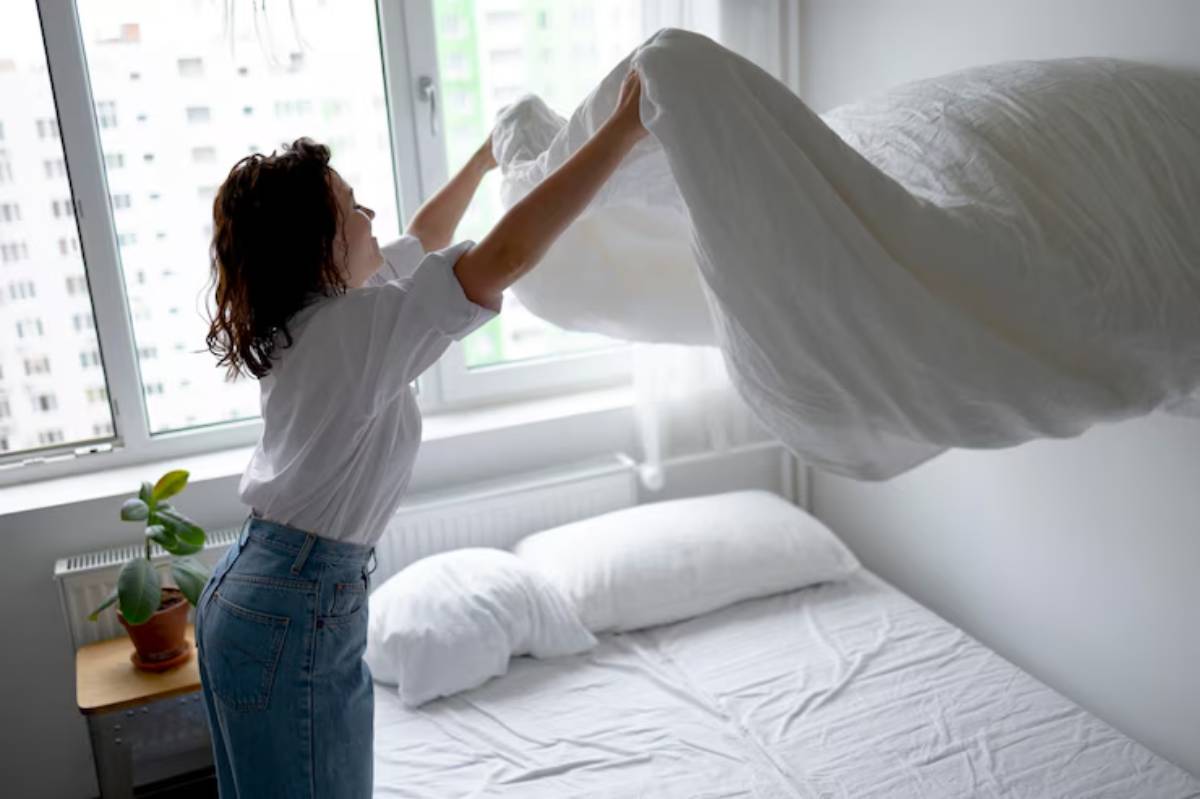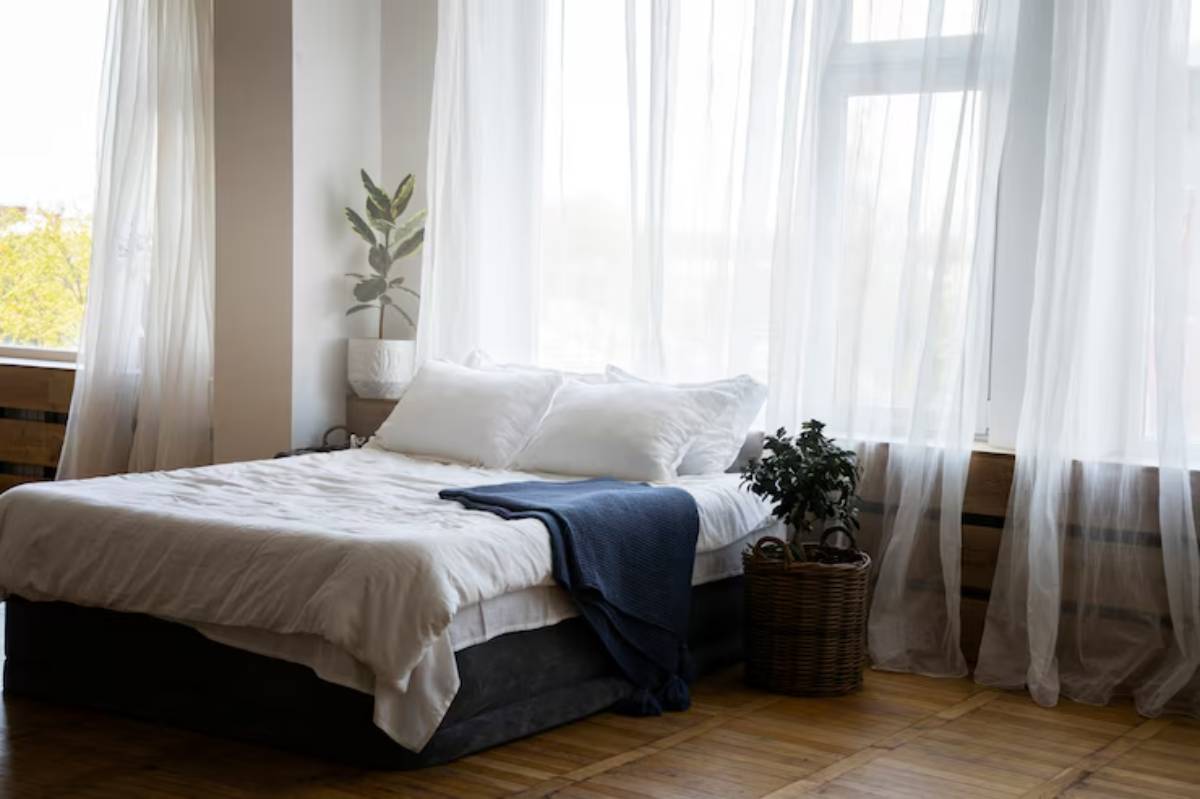The Health Blog

How to Design a Sleep-Friendly Bedroom
If you struggle to fall asleep or wake up feeling unrested, your bedroom may be to blame. Your environment plays a huge role in how well you sleep.
The good news? A few simple changes can transform your room into a calming, natural sleep space. This guide shows you how to master sleep environment setup and use smart bedroom optimisation techniques to enjoy deeper, better quality rest.
Pro Tip: Your bedroom should feel like a sleep sanctuary, not a multi-purpose living space.
Quick Guide: Key Elements of a Sleep-Friendly Bedroom

- Cool, dark, and quiet
- Comfortable bedding and mattress
- Minimal clutter and distractions
- Calming colours and soft textures
- Low levels of artificial light
Important: Your bedroom environment signals your brain when it’s time to wind down.
Step-by-Step: How to Optimise Your Bedroom for Sleep

Step 1: Control Temperature
The ideal room temperature for sleep is between 16°C and 19°C.
| Tip | Why It Works |
| Use breathable cotton or bamboo bedding | Helps regulate body temperature |
| Open windows or use a fan for airflow | Reduces stuffiness |
| Layer blankets rather than use heavy duvets | Easy to adjust warmth during the night |
Quick Tip: If you wake up sweaty or chilly, your room temperature likely needs adjustment.
Step 2: Block Out Light
Light disrupts melatonin production, the hormone responsible for sleep.
Options for minimising light:
- Install blackout curtains or blinds
- Wear a soft, breathable sleep mask
- Turn off electronics or cover display lights
- Use dimmable lamps for soft lighting before bed
Sustainability Note: Choose eco-friendly curtain fabrics and rechargeable LED nightlights.
Step 3: Minimise Noise
External sounds can disrupt your sleep cycle even if you don’t fully wake up.
Solutions to try:
| Method | Benefit |
| White noise machine | Masks traffic, neighbours, or household sounds |
| Soft background music | Helps block disruptive noises |
| Earplugs | Effective for sensitive sleepers |
| Heavy curtains or rugs | Absorb sound within the room |
Pro Tip: Avoid loud ticking clocks or appliances near your bed.
Step 4: Choose Calming Colours and Textures
Colour and texture affect mood more than you might realise.
Recommended bedroom colours:
- Soft neutrals: ivory, beige, taupe
- Pastel blues and greens: associated with calm and relaxation
- Soft greys: modern yet soothing
Textures to try:
- Smooth cotton sheets
- Fluffy throws or knitted blankets
- Cushions with soft covers
Quick Tip: Avoid bright reds, oranges, or busy patterns that stimulate the brain.
Step 5: Declutter and Simplify
A tidy bedroom supports a calm, restful mind.
Decluttering checklist:
- Keep nightstands clear of paperwork or gadgets
- Store laundry out of sight
- Limit decorative items to a few favourites
- Avoid having exercise equipment or workspaces in your bedroom
Pro Tip: Less clutter = fewer distractions = better sleep.
Step 6: Remove Electronics
Devices keep your brain active and interfere with your sleep cycle.
- Remove televisions, tablets, or computers from your bedroom
- Avoid scrolling on your phone in bed
- Use a traditional alarm clock instead of your mobile phone
Sustainability Note: Unplug chargers and appliances overnight to reduce energy waste.
Step 7: Add Natural Elements for Tranquillity
Bringing nature into your room can improve relaxation.
Ideas for a natural sleep space:
- A small indoor plant like a peace lily or snake plant
- Use natural materials like wood, stone, or linen
- Choose essential oils (e.g., lavender) for gentle bedtime aromatherapy
Quick Tip: Avoid strong-scented flowers or plants that require too much maintenance.
Additional Ways to Optimise Your Sleep Environment

| Tip | Benefit |
| Keep a consistent sleep-wake schedule | Supports your body’s natural rhythm |
| Use low-wattage bulbs for evening reading | Reduces bright light exposure |
| Place your bed away from windows or vents | Prevents drafts or temperature shifts |
| Rotate your mattress every 6 months | Maintains comfort and support |
| Wash bedding weekly | Keeps allergens and dust at bay |
Common Mistakes to Avoid
| Mistake | Solution |
| Using bright lights before bed | Switch to warm-toned bulbs or candles |
| Allowing pets to disrupt sleep | Train pets to sleep in their own space |
| Keeping work papers by the bed | Move work to a different room |
| Forgetting to air out the bedroom | Open windows daily for fresh air |
| Choosing too many bold patterns | Stick to calming, cohesive designs |
Frequently Asked Questions
Does bedroom colour really affect sleep?
Yes. Soft, muted tones help relax your mind. Bright or bold colours can have the opposite effect.
Is it bad to have plants in the bedroom?
Not at all. Many plants help clean the air and create a calming vibe. Just avoid overpowering scents.
Can white noise actually improve sleep?
For many people, yes. It masks sudden noises that would otherwise disturb your rest.
How often should I change my mattress or pillows?
Mattresses should be replaced every 7–10 years; pillows every 1–2 years.
What about blue light from screens?
Blue light suppresses melatonin. Avoid screens at least 30 minutes before bedtime for better results.
Create Your Sleep Sanctuary
Designing the perfect sleep environment setup isn’t complicated. With a few thoughtful changes, you can build a bedroom that encourages deep rest and calm.
From clever bedroom optimisation tips to adding gentle touches of nature, you’ll create a peaceful, natural sleep space you love to return to each night.
Simplify. Soften. Sleep deeply.









